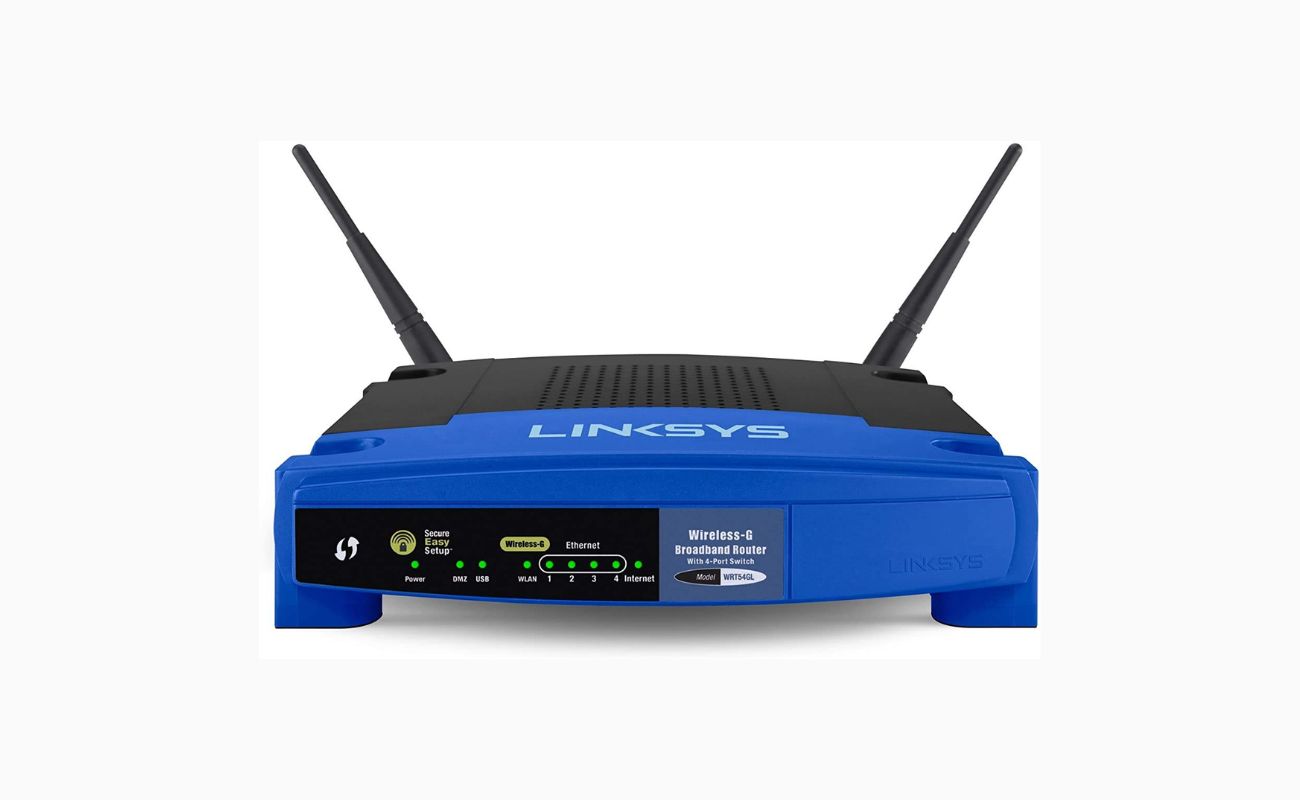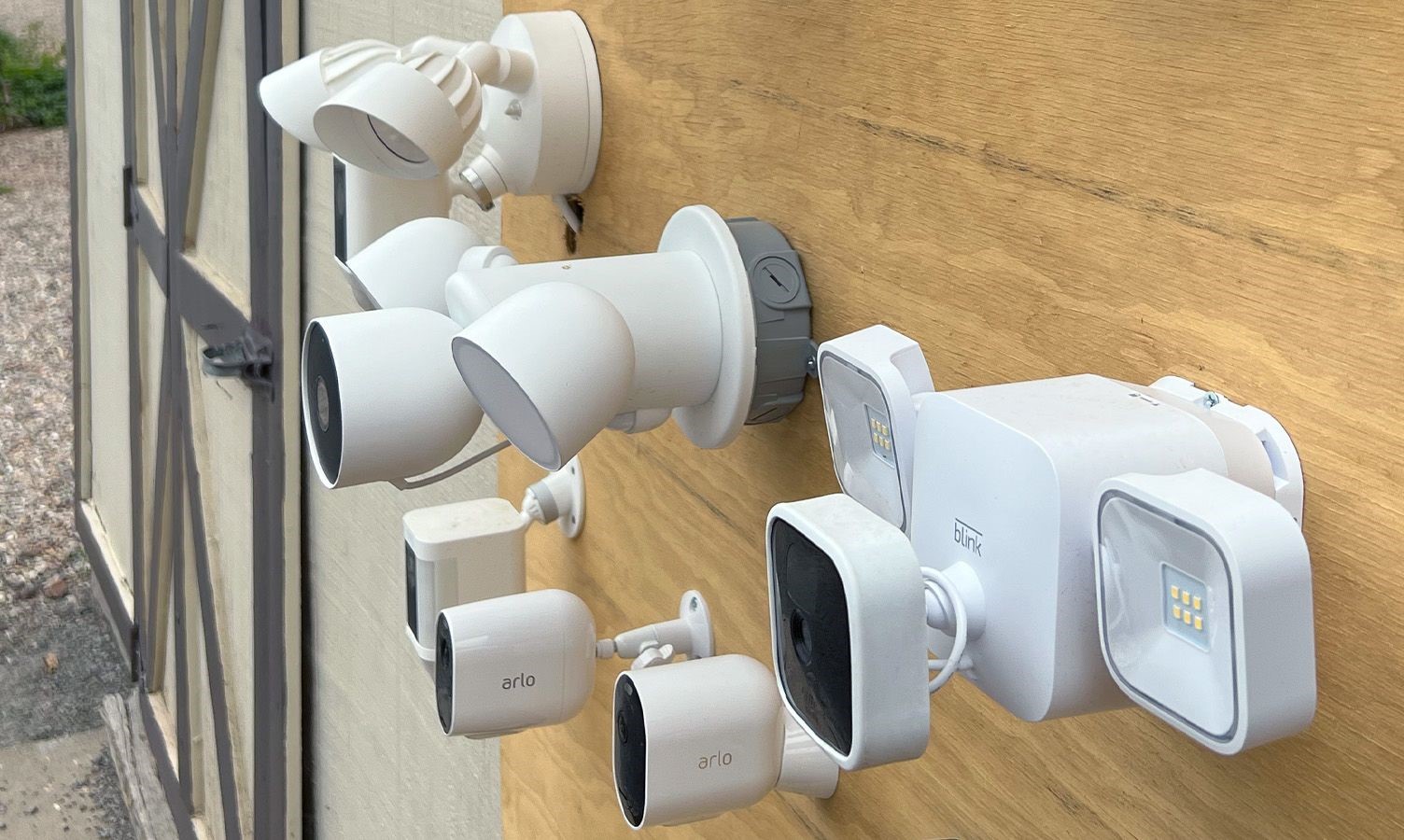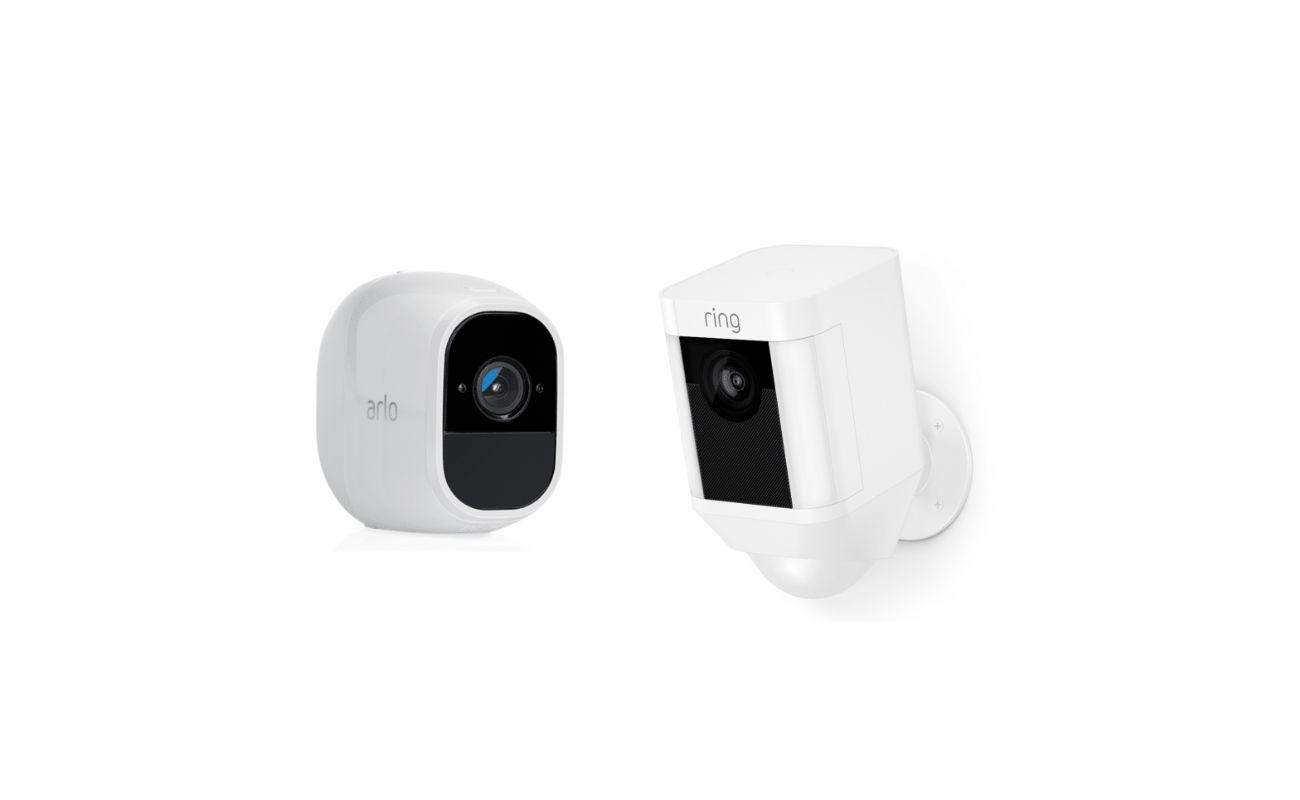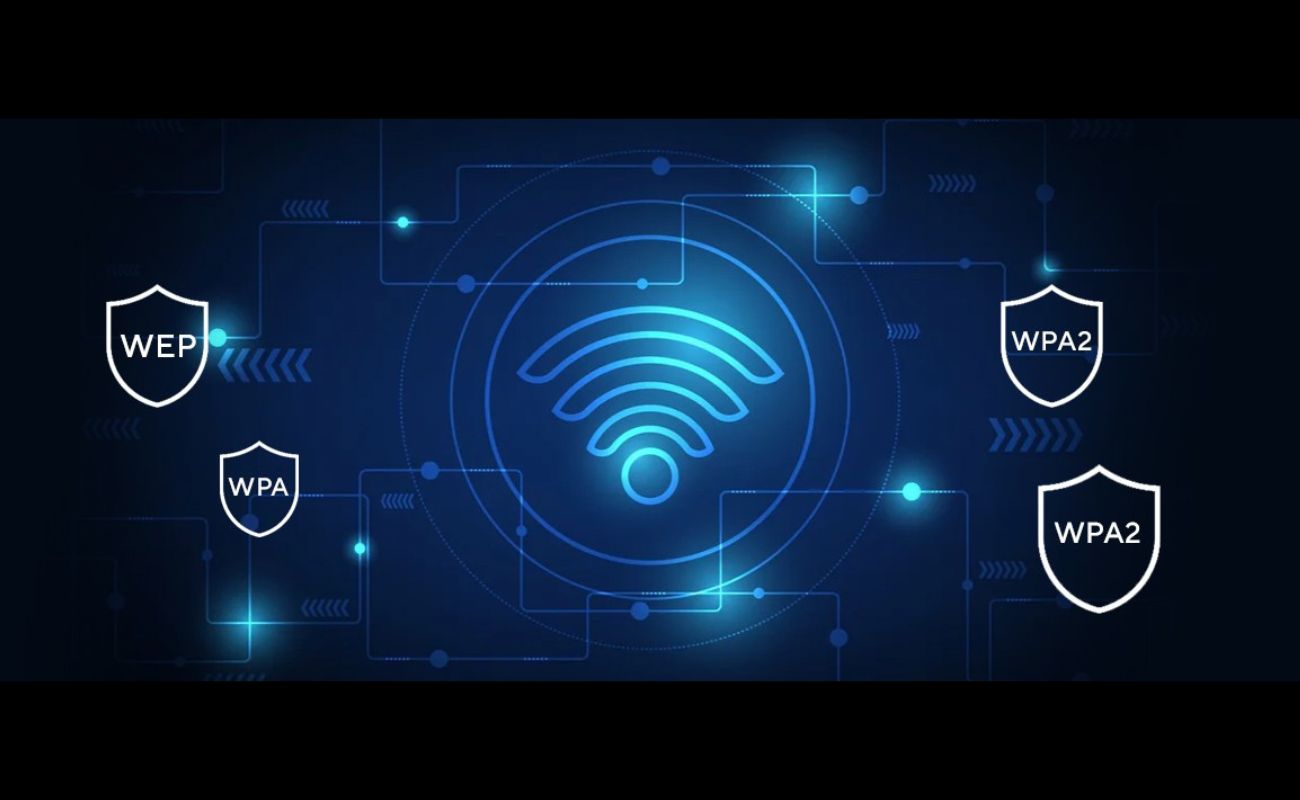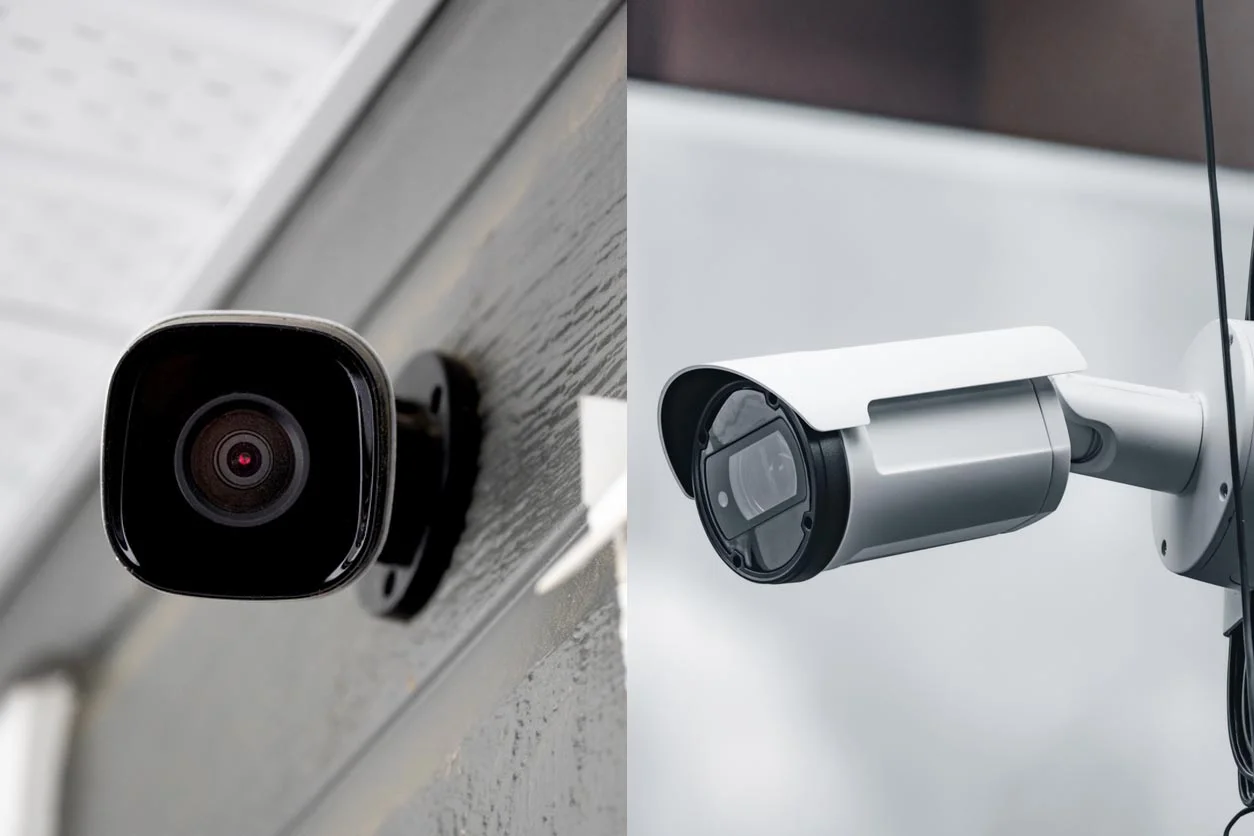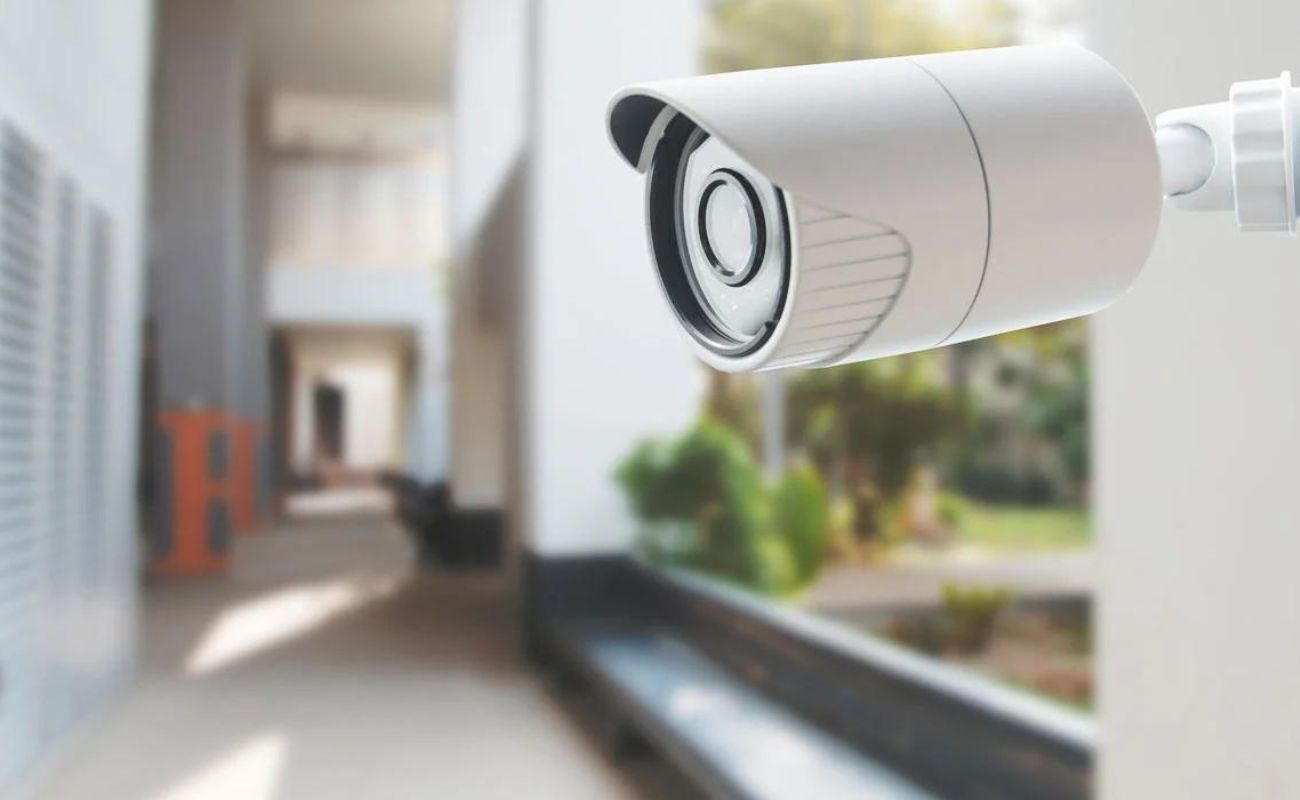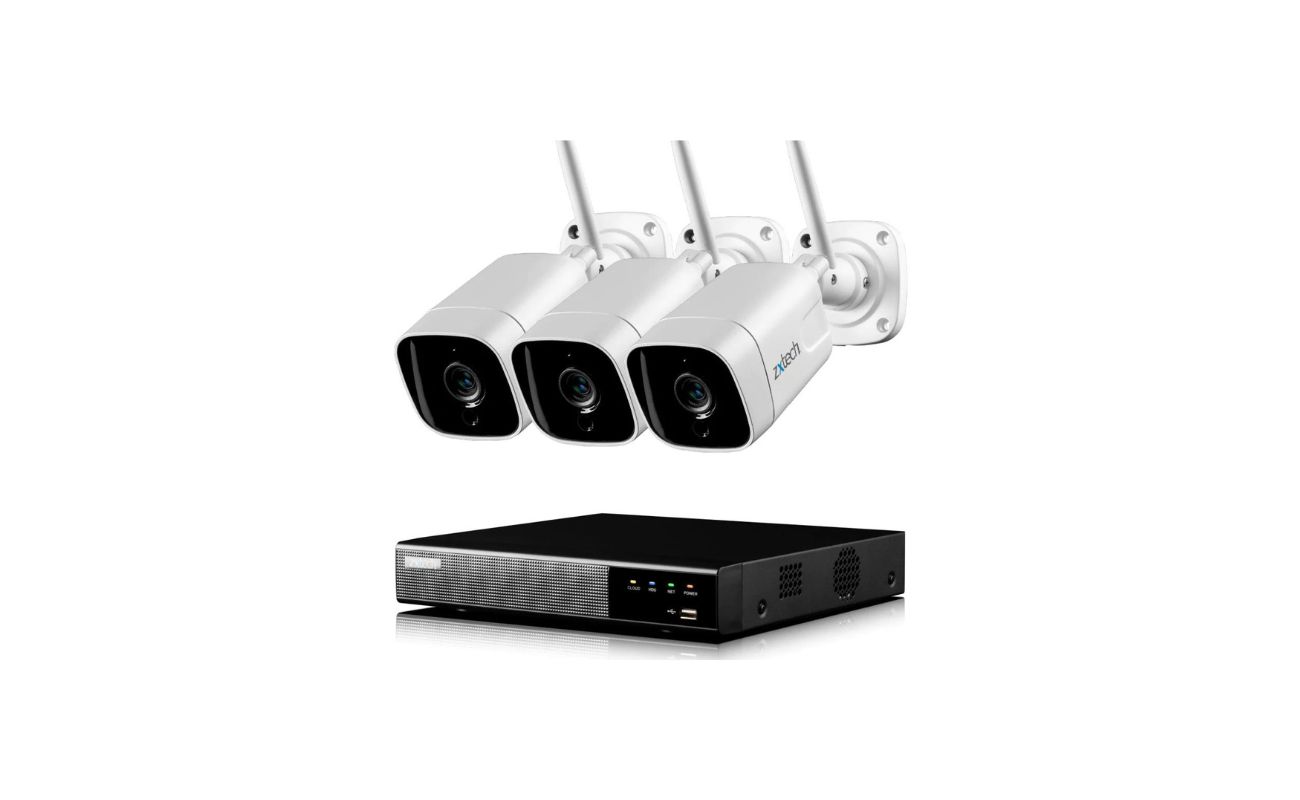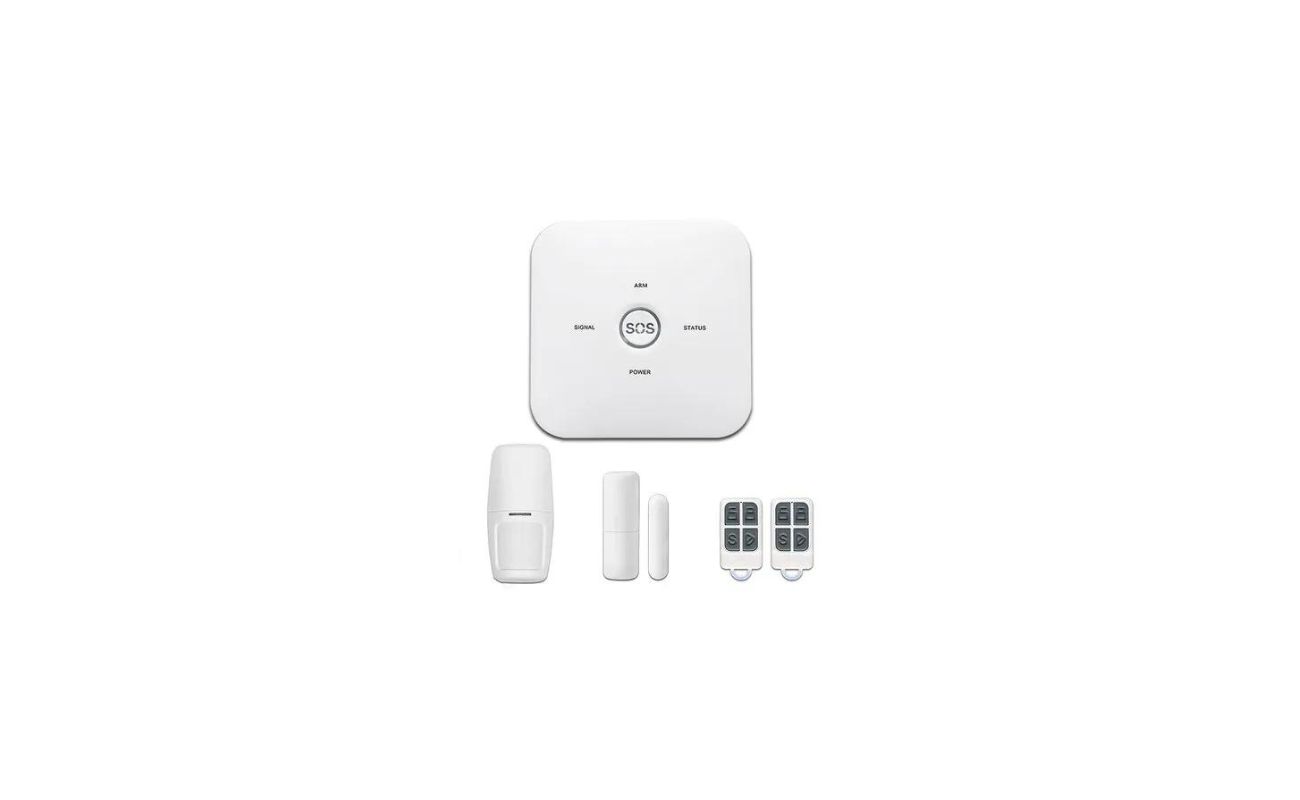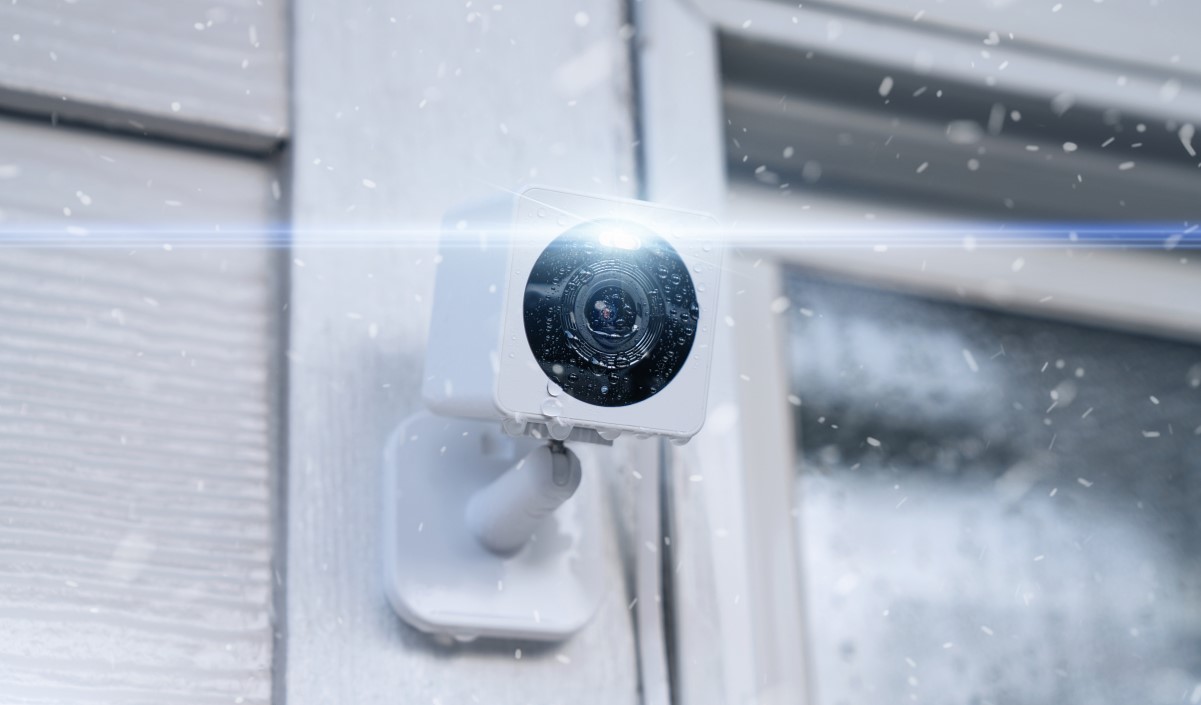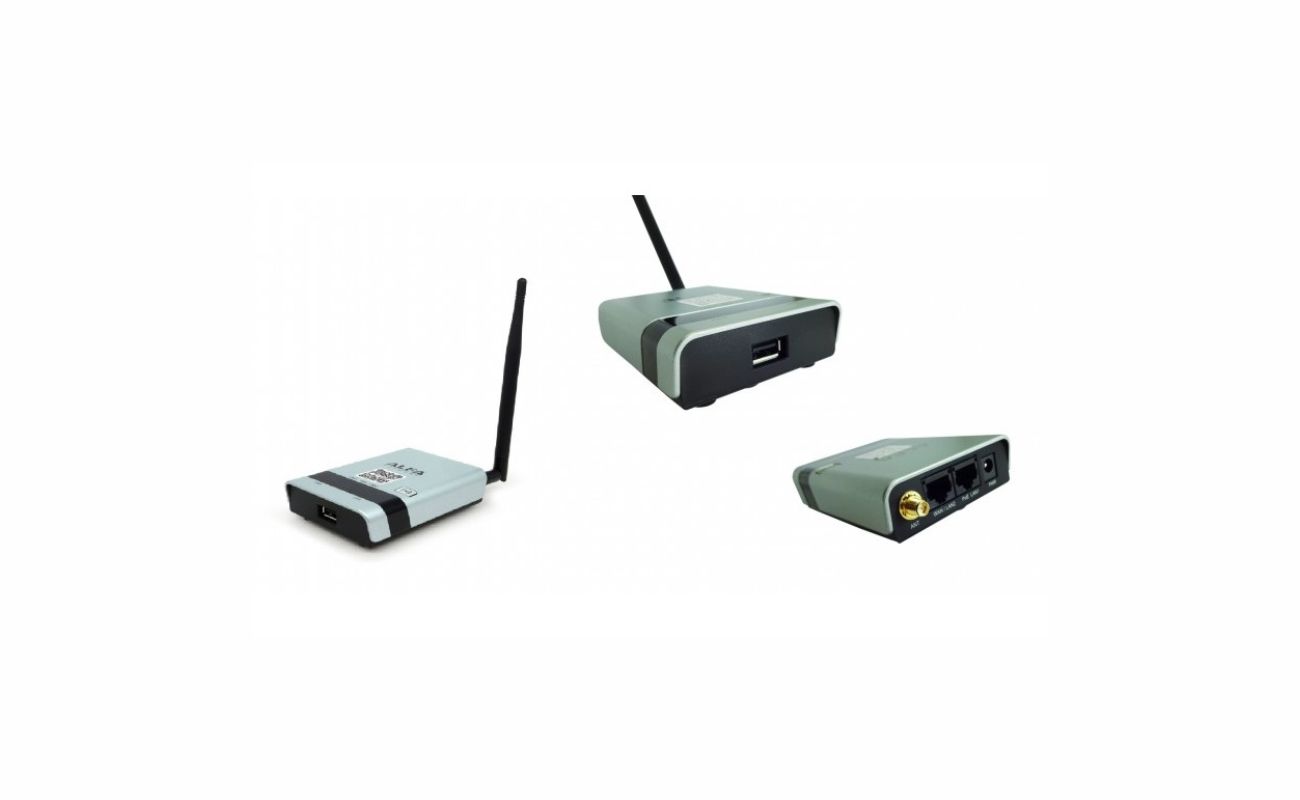Home>Home Security and Surveillance>Which Wireless Security Doesn’t Provide Adequate Security In Modern Day Networks
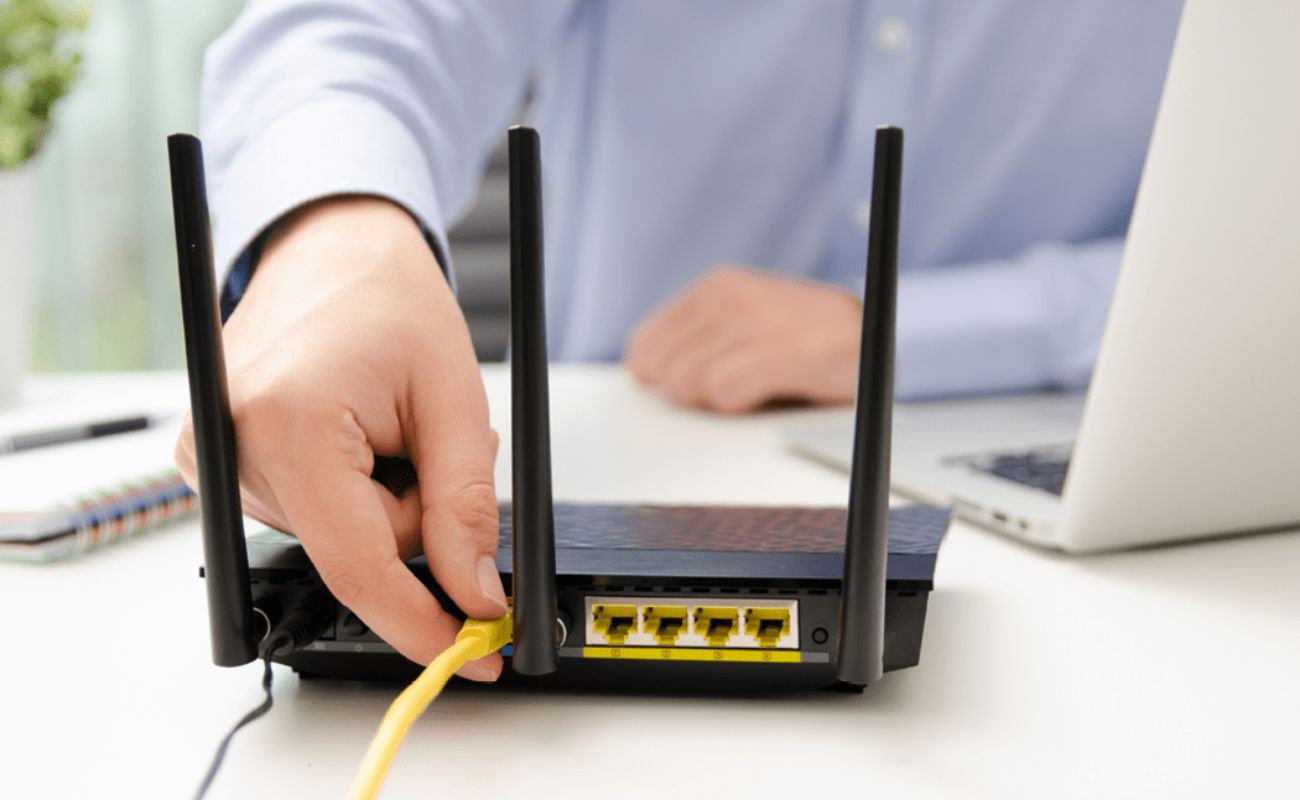

Home Security and Surveillance
Which Wireless Security Doesn’t Provide Adequate Security In Modern Day Networks
Modified: March 6, 2024
Discover why wireless security fails to provide adequate protection in modern day networks. Find out how to improve your home security and surveillance.
(Many of the links in this article redirect to a specific reviewed product. Your purchase of these products through affiliate links helps to generate commission for Storables.com, at no extra cost. Learn more)
Introduction
Welcome to the digital age, where technology has revolutionized the way we live, work, and communicate. Our homes have become smarter, with interconnected devices and appliances that provide convenience and security. However, with this increased connectivity comes the need for robust home security and surveillance systems to protect our families and belongings.
Wireless security has emerged as a crucial component of modern-day networks. Gone are the days of relying solely on traditional lock-and-key systems. Now, homeowners have the ability to monitor their properties remotely, receive real-time alerts, and even control their security systems through smartphones and tablets. But not all wireless security options are created equal, and it is essential to choose a solution that provides adequate protection in today’s ever-evolving threat landscape.
In this article, we will explore the various wireless security protocols commonly used in home surveillance systems and identify their strengths and weaknesses. We will also discuss the emerging security concerns in modern networks and the importance of robust wireless security measures to safeguard your home and peace of mind. Let’s delve into the world of wireless security systems and find out which ones meet the demands of the present-day digital landscape.
Key Takeaways:
- Choose WPA3 for Stronger Wireless Security
Upgrade to WPA3 for better protection against cyber threats and unauthorized access. It offers stronger encryption and improved security measures for your home surveillance system. - Stay Informed and Vigilant About Wireless Security
Regularly update devices, use strong passwords, and be aware of emerging threats. Prioritize robust wireless security to safeguard your home and family in the digital age.
Wireless Security Overview
Wireless security is the protection of wireless networks and devices from unauthorized access and potential intrusions. It involves the implementation of various protocols and encryption methods to ensure the confidentiality, integrity, and availability of information transmitted over wireless networks.
Wireless security is particularly important in home surveillance systems, as it safeguards sensitive data and prevents unauthorized individuals from gaining access to your network. Without proper security measures in place, your home security system could be vulnerable to cyber attacks, unauthorized access, and privacy breaches.
There are several common wireless security protocols used in home surveillance systems. These protocols establish a secure communication channel between devices and protect transmitted data from being intercepted or tampered with. Let’s take a closer look at some of these protocols:
1. WEP (Wired Equivalent Privacy): Developed in the late 1990s, WEP was the first security protocol used in wireless networks. However, it has significant vulnerabilities and is now considered highly insecure. WEP uses a shared key authentication and RC4 encryption algorithm, which can be easily cracked using various techniques.
2. WPA (Wi-Fi Protected Access) and WPA2: WPA and its successor WPA2 were developed to overcome the weaknesses of WEP. These protocols use a stronger encryption algorithm called AES (Advanced Encryption Standard) and implement more robust security measures. WPA2 is currently the most widely used wireless security protocol in home surveillance systems.
3. WPA3: The latest addition to the WPA family, WPA3, aims to enhance wireless security even further. It provides stronger encryption, stronger password protection, and improved security measures against offline attacks. While WPA3 is gaining popularity, it is still not widely supported by all devices and may not be compatible with older devices.
Overall, the choice of wireless security protocol for your home surveillance system is crucial. It is essential to select a protocol that ensures the integrity and confidentiality of your data and provides a high level of protection against potential threats.
Common Wireless Security Protocols
When it comes to securing your wireless home surveillance system, it’s important to understand the different protocols available and their strengths and weaknesses. Let’s explore some of the commonly used wireless security protocols:
1. WEP (Wired Equivalent Privacy): WEP was one of the earliest wireless security protocols and aimed to provide security comparable to that of a wired network. However, it has numerous vulnerabilities and is easily cracked. WEP uses a shared key authentication method and a stream cipher encryption algorithm called RC4. Unfortunately, WEP’s key management and encryption methods are weak, making it susceptible to various attacks.
2. WPA (Wi-Fi Protected Access): To overcome the weaknesses of WEP, the Wi-Fi Alliance introduced WPA as an interim solution. WPA uses a stronger encryption algorithm called TKIP (Temporal Key Integrity Protocol) and implements more robust security measures. It also introduced support for authentication protocols like EAP (Extensible Authentication Protocol), making it suitable for enterprise-level security.
3. WPA2 (Wi-Fi Protected Access 2): WPA2 is the current industry-standard wireless security protocol and greatly enhances the security of wireless networks. It uses the AES (Advanced Encryption Standard) encryption algorithm, which is much more secure than the RC4 algorithm used in WEP and the TKIP algorithm used in WPA. WPA2 also supports enterprise-level security features like 802.1X authentication and RADIUS (Remote Authentication Dial-In User Service) server integration.
4. WPA3 (Wi-Fi Protected Access 3): WPA3 is the latest iteration of the Wi-Fi Protected Access protocol and brings several improvements over its predecessor. It introduces stronger encryption algorithms, such as 192-bit encryption for enterprise networks, and individualized data encryption to protect each device’s data on a network. WPA3 also addresses password-related vulnerabilities by introducing Simultaneous Authentication of Equals (SAE), making it more secure against offline attacks.
While WPA2 is still widely used and provides robust security, transitioning to WPA3 is becoming increasingly important as new devices and technologies emerge. However, it’s worth noting that older devices may not support WPA3, so compatibility should be taken into consideration when upgrading your home surveillance system.
It’s important to choose the most secure wireless security protocol that meets your needs and ensures the confidentiality and integrity of your data. Additionally, regularly updating your devices’ firmware and using strong, unique passwords will further enhance the security of your home surveillance system.
Inherent Limitations of WEP
Wired Equivalent Privacy (WEP) was one of the earliest wireless security protocols introduced to protect wireless networks. However, it has several inherent limitations that make it highly insecure and unfit for modern-day networks. Let’s explore some of the key limitations of WEP:
1. Weak Encryption: WEP uses the RC4 encryption algorithm, which is susceptible to various cryptographic attacks. One of the main weaknesses of WEP is the use of a fixed encryption key, shared among all devices on the network. This key can be easily intercepted and used to decrypt the encrypted data.
2. Poor Key Management: WEP employs weak key management practices, making it prone to security breaches. The encryption keys used by all devices on the network are periodically changed, but the process is flawed. Attackers can exploit the predictable key rotation and collect enough encrypted data to crack the encryption keys.
3. Lack of Authentication: WEP lacks a robust authentication mechanism, allowing unauthorized individuals to gain access to the network. It relies solely on a shared key, which is easily obtainable through various attack methods such as packet sniffing and brute-force attacks. Once an attacker obtains the key, they can easily decrypt all the network traffic.
4. Vulnerability to Attacks: WEP is vulnerable to several types of attacks, such as the IV (Initialization Vector) attack and the Chop-Chop attack. In the IV attack, an attacker can exploit the weakness in the WEP’s key scheduling algorithm, leading to the recovery of the encryption key. The Chop-Chop attack exploits the predictable nature of the RC4 algorithm to decrypt a single byte of traffic at a time.
5. Lack of Compatibility: WEP is not compatible with newer wireless security protocols such as WPA2 and WPA3. This limits its usability in modern networks, as many devices no longer support WEP due to its vulnerabilities. Upgrading to a more secure wireless security protocol is essential to ensure compatibility with current and future devices.
Due to these inherent limitations, using WEP as a security protocol in modern networks is highly discouraged. It is recommended to upgrade to more secure protocols like WPA2 or WPA3 to ensure the confidentiality and integrity of your network traffic and protect your home surveillance system from unauthorized access and potential data breaches.
Vulnerabilities in WPA and WPA2
While Wired Equivalent Privacy (WEP) had significant security flaws, its successors, Wi-Fi Protected Access (WPA) and WPA2, were developed to address those vulnerabilities. However, over time, vulnerabilities in WPA and WPA2 have also been discovered. Let’s explore some of the notable vulnerabilities in these wireless security protocols:
1. WPA Vulnerabilities: WPA uses the Temporal Key Integrity Protocol (TKIP) for encryption, which was designed as a temporary solution until a more robust encryption algorithm could be devised. One of the significant vulnerabilities of TKIP is its use of a static encryption key. This makes it susceptible to attacks such as the TKIP Key Recovery (TKIPKR) attack, where an attacker can exploit the weak key management to recover the encryption key and decrypt the network traffic.
2. WPA2 Vulnerabilities: WPA2 addressed the vulnerabilities in WPA by replacing TKIP with the more secure Advanced Encryption Standard (AES) encryption algorithm. While WPA2 is considered much more secure, it is not without vulnerabilities. One notable vulnerability is the KRACK attack (Key Reinstallation Attack), which exploits weaknesses in the WPA2 4-way handshake process to decrypt network traffic and even inject malicious data.
3. Weak Passwords: An overlooked vulnerability in both WPA and WPA2 is the use of weak passwords. Many users choose simple, easily guessable passwords or use default passwords provided by the device manufacturer. Weak passwords can be easily cracked using brute-force attacks or dictionary attacks, allowing unauthorized access to the wireless network.
4. Enterprise-level Vulnerabilities: Both WPA and WPA2 support enterprise-level security features, such as the use of 802.1X authentication and RADIUS servers. However, misconfigurations in these authentication systems can lead to vulnerabilities. If the RADIUS server is compromised or the 802.1X authentication is improperly implemented, an attacker can gain unauthorized access to the network.
It’s crucial to note that many of these vulnerabilities require proximity to the network or sophisticated attack techniques. Nonetheless, they highlight the importance of regularly updating devices and firmware to patch any known vulnerabilities and using strong, unique passwords to protect against attacks.
Addressing the vulnerabilities in WPA and WPA2 led to the development of the more secure WPA3 protocol. Upgrading to WPA3 is recommended to mitigate these vulnerabilities and further enhance the security of your home surveillance system and wireless network.
Use WEP (Wired Equivalent Privacy) as it is easily cracked and no longer considered secure. Upgrade to WPA2 or WPA3 for better wireless security.
Crackability of WPA3
WPA3 (Wi-Fi Protected Access 3) is the latest iteration of the Wi-Fi Protected Access protocol, designed to enhance the security of wireless networks. It brings several improvements over its predecessor, WPA2, including stronger encryption algorithms and enhanced security features. While WPA3 provides a significant boost in security, it is not impervious to potential attacks. Let’s explore the crackability of WPA3:
1. Password Cracking: One of the primary attack vectors against WPA3 is password cracking. Although WPA3 introduces Simultaneous Authentication of Equals (SAE) as a password-based authentication method, weak or easily guessable passwords can still be targeted using brute-force or dictionary attacks. It is crucial to use strong, complex, and unique passwords to mitigate this vulnerability.
2. Side-Channel Attacks: Side-channel attacks are attacks that exploit information leakage through implementation or physical properties of the system. While WPA3 incorporates robust encryption algorithms such as Dragonfly key exchange and 192-bit encryption for enterprise networks, side-channel attacks could potentially compromise the security of the communication channel. However, executing successful side-channel attacks on WPA3 requires sophisticated skills and access to specialized hardware.
3. Implementation Flaws: The crackability of WPA3 can also be influenced by implementation flaws in specific devices or vendors. It’s essential to keep devices and firmware up to date to patch any known vulnerabilities and address implementation flaws that may exist in specific product offerings.
4. Emerging Attacks: As WPA3 is adopted more widely, researchers and hackers may discover new attack vectors or vulnerabilities. The evolving nature of cybersecurity requires ongoing research and continuous updates to security measures to combat emerging threats effectively.
It is worth noting that while WPA3 may not be completely crackproof, it significantly improves security compared to its predecessors. It offers stronger encryption, individualized data protection, and enhanced authentication methods, making it significantly more resistant to attacks than older protocols like WEP, WPA, and WPA2.
To ensure the highest level of security, it is crucial to implement best practices such as using strong and unique passwords, keeping devices and firmware up to date, and regularly monitoring for any emerging security vulnerabilities or patches. Additionally, when selecting devices for your home surveillance system, choose reputable brands that prioritize security and offer regular updates and support.
While WPA3 is a commendable advancement in wireless security, it’s important to stay vigilant and proactive in protecting your home surveillance system and wireless network from potential threats.
Emerging Security Concerns in Modern Networks
The rapid advancement of technology has led to an increasingly interconnected world, with modern networks playing a crucial role in our everyday lives. However, this connectivity also presents new and emerging security concerns that need to be addressed to safeguard our home surveillance systems and wireless networks. Let’s explore some of the key security concerns in modern networks:
1. Internet of Things (IoT) Vulnerabilities: The proliferation of IoT devices in homes has introduced a plethora of new potential vulnerabilities. Many IoT devices lack robust security measures, making them attractive targets for cybercriminals. Compromised IoT devices can not only compromise the security of the network but can also be used as entry points for unauthorized access to other devices and sensitive data.
2. Increased Cyber Attacks: As networks become more interconnected, cyber attacks are growing more sophisticated and prevalent. Threats such as malware, ransomware, and phishing attacks can breach the security of home surveillance systems and compromise the privacy and safety of individuals and their properties. It is crucial to implement robust security measures, such as firewalls, intrusion detection systems, and regular security updates, to protect against these threats.
3. Wireless Network Eavesdropping: Wireless networks are inherently more vulnerable to eavesdropping compared to wired networks. Hackers can intercept and potentially decrypt wireless network transmissions, gaining unauthorized access to sensitive data. Employing strong encryption protocols, such as WPA3, and regularly monitoring network traffic can help mitigate this risk.
4. Cloud Security: With the increasing use of cloud services for storing and accessing data, ensuring the security of cloud-based systems becomes crucial. Cloud data breaches can result in unauthorized access to sensitive information, leading to severe privacy and security implications. Implementing proper access controls, strong authentication methods, and regular security assessments are essential to maintain the integrity and confidentiality of cloud-based data.
5. Botnets and DDoS Attacks: Botnets, networks of compromised devices controlled by malicious actors, can launch large-scale Distributed Denial-of-Service (DDoS) attacks. These attacks overload networks and services, rendering them inaccessible to legitimate users. Implementing proper network security measures, including robust firewalls and traffic monitoring, can help prevent and mitigate the impact of DDoS attacks.
6. Social Engineering: Hackers have become increasingly adept at exploiting human vulnerabilities through social engineering techniques. Phishing attacks, impersonation, and other tactics can trick individuals into divulging sensitive information or granting unauthorized access. Raising awareness about social engineering techniques and implementing strong authentication methods can help mitigate this risk.
In today’s interconnected world, staying informed about emerging security concerns and adopting proactive security measures is critical. Regularly updating devices and software, using strong passwords, implementing encryption protocols, and incorporating multi-factor authentication are all essential steps to protect your home surveillance system and wireless network from evolving security threats.
By staying vigilant and prioritizing security, we can ensure the safety and privacy of our homes and loved ones in the digital era.
Importance of Robust Wireless Security
Robust wireless security is of paramount importance in today’s digital landscape, especially when it comes to protecting our home surveillance systems and wireless networks. Here are several reasons why robust wireless security is crucial:
1. Prevention of Unauthorized Access: A robust wireless security system prevents unauthorized individuals from gaining access to your home surveillance system and network. Unauthorized access can lead to privacy breaches, theft of personal information, and even physical security risks. With the right security measures in place, you can ensure that only authorized users can connect to your network and access your surveillance system.
2. Protection against Cyber Attacks: Cyber attacks are a constant threat in today’s interconnected world. Hackers continually find new ways to exploit vulnerabilities and gain unauthorized access to networks. Robust wireless security protocols and encryption techniques such as WPA2 or WPA3 provide a strong defense against attacks, safeguarding your data and personal information from theft or corruption.
3. Privacy and Confidentiality: Wireless security measures help protect the privacy and confidentiality of your data and communications. With encryption protocols in place, the information sent over your network is secure, preventing unauthorized interception and eavesdropping. This is essential, especially when transmitting sensitive data or conducting video surveillance within your home.
4. Mitigation of Network Congestion: A robust wireless security system also helps mitigate network congestion. Without proper security measures in place, unauthorized users can exploit network resources, causing slowdowns and impacting performance. By implementing security protocols, you ensure that your network resources are dedicated to authorized users, optimizing network performance.
5. Protection against IoT Vulnerabilities: The rise of Internet of Things (IoT) devices in our homes brings convenience but also introduces potential security vulnerabilities. Weakly secured IoT devices can be compromised by hackers, allowing them to gain unauthorized access to your network and potentially exploit other connected devices. Robust wireless security helps protect against these vulnerabilities, securing your IoT devices and preventing unauthorized access.
6. Peace of Mind: A robust wireless security system provides peace of mind, knowing that your home surveillance system and network are protected. With the constant threat of cyber attacks and the potential impact on personal safety and privacy, having strong wireless security measures in place ensures that you and your family can go about your daily lives without worrying about potential security risks.
It is important to note that wireless security is not a one-time setup. It requires constant monitoring, regular updates, and the adoption of new security measures as technology advances. Regularly updating devices, implementing strong passwords, and staying informed about emerging security threats are essential steps to maintain the integrity and security of your home surveillance system and wireless network.
By prioritizing robust wireless security, you can enjoy the convenience and benefits of modern technology without compromising on safety, privacy, or peace of mind.
Conclusion
In conclusion, robust wireless security is crucial for safeguarding our home surveillance systems and wireless networks in the modern age of connectivity. By understanding the vulnerabilities and limitations of older protocols such as WEP, and recognizing the potential risks in WPA and WPA2, we can make informed decisions when it comes to choosing the right security measures for our networks.
While no security system is completely infallible, implementing strong wireless security protocols like WPA3 significantly enhances the protection of our data, privacy, and physical security. Upgrading to more secure protocols and regularly updating devices and firmware are essential steps to stay ahead of emerging security concerns.
Additionally, staying informed about the evolving threat landscape and adopting proactive security measures such as using strong passwords, regularly monitoring network traffic, and being wary of social engineering techniques help fortify our defenses against potential cyber attacks.
By investing in robust wireless security, we can prevent unauthorized access to our home surveillance systems, protect against cyber attacks, ensure privacy and confidentiality, and mitigate network congestion. Strong wireless security measures also play a crucial role in securing IoT devices and providing peace of mind for homeowners.
Remember, wireless security is not a one-time setup but an ongoing process that requires vigilance and awareness. Regularly updating devices, conducting security assessments, and keeping abreast of new security measures and best practices are essential to maintaining the integrity and security of our home surveillance systems and wireless networks.
In our ever-connected world, where technology continues to advance at a rapid pace, ensuring robust wireless security is no longer an option but a necessity. By prioritizing and implementing the right security measures, we can enjoy the benefits of a smart and secure home without compromising on safety, privacy, or peace of mind.
Frequently Asked Questions about Which Wireless Security Doesn't Provide Adequate Security In Modern Day Networks
Was this page helpful?
At Storables.com, we guarantee accurate and reliable information. Our content, validated by Expert Board Contributors, is crafted following stringent Editorial Policies. We're committed to providing you with well-researched, expert-backed insights for all your informational needs.
